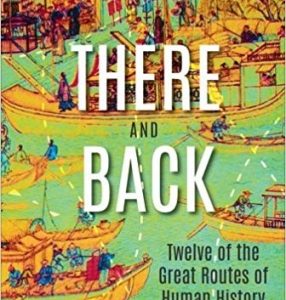Although the history of the Iranian monarchy itself goes back 2,500 years, the periods of strong rule during important dynasties, such as the Achaemenids and the Sasanids, were very short-lived. After the Arab conquest in the reign of ‘Omar (634-644), Iran was ruled first from Medina and then from Damascus and later from Baghdad. Later still, Iran was ruled largely by Turkish and Mongol invaders. The Iranian people had never, however, hesitated to resist tyrannous rule. From the time of the legendary Kaveh in Ferdowsi’s Shahnama to that of Ayatollahol ‘Ozma Rouhollah Khomeini, the Iranian masses have struggled to establish a just and dynamic society. There has been no dearth of counter-revolutions, demagogues and impostors either. Many revolutions designed to overthrow despotism culminated in a new tyranny leading to a fresh revolution. Although the present work describes all important rebellions, revolutions and terrorist activities in Iran, it sees revolution only in terms of those human endeavours which fulfill a crucial function in the development of society; and does not seek to pass moral judgments. The work is also designed to analyse the process of reconstruction and revolution within the framework of the political, religious, literary and artistic development of Iran.
ABOUT THE AUTHOR Saiyid Athar Abbas Rizvi
Dr. S.A.A. Rizvi, M.A., Ph.D., D.Litt. has been working as Reader in the department of Asian Civilizations at the Australian National University, Canberra since 1967. in 1969 he was elected a Fellow of the Australian Academy of the Humanities. Before joining the A.N.U. he worked as Head of the History Department, Jammu and Kashmir University, and earlier as Secretary of the History of the Freedom Movement Committee, Government of U.P. Dr. Rizvi was a Research Associate in the School of Oriental and African Studies, University of London, during 1962-63 and was a Fellow in the same institution in 1969. In 1972 he was a Visiting Professor at the Jawaharlal Nehru University, New Delhi. Among Dr. Rizvi’s most important publications, are the following: Source Book on Medieval Indian History, in Hindi, Vols. I-X (Aligarh Muslim University, 1955-62); Freedom Struggle in U.P. Vols. I-VI (U.P. Government, Lucknow, 1957-61); Muslim Revivalist Movements in Northern India in the 16th and 17thCenturies (Agra, 1965); Fatehpur Sikri (New Delhi, 1972); Fatehpur Sikri in collaboration with Dr. V.J.A. Flynn (Bombay, 1975); Hindi translations of the Maqaddamah of Ibn Khaldun (Lucknow, 1961); Haqa’iq-i-Hindi (Varanasi, 1957); Alakh Bani (Aligarh, 1971); Religious and Intellectual History of the Muslims in Akbar’s Reign 1556-1605 with special reference to Abu’l-Fazl (New Delhi, 1975); A History of Sufism in India, Vol. I (New Delhi, 1978); A History of Sufism in India, Vol. II (1983); Shah Wali-Allah and his times (Canberra, 1980) and Iran: Royalty, Religion and Revolution (Canberra, 1980); Landmarks of South Asian Civilizations (New Delhi, 1984). He has also contributed chapters to the Cambridge History of Islam Vol. II (Cambridge, 1970); the Cultural History of India (Oxford, 1975) and in the World of Islam (London, 1976). His research articles have been published in various international Journals. Forthcoming: A History of Islamic Proselytisation in India, A Short History of Sufism in India, Awrangzib and his time to be published by Munshiram Manoharlal Publishers Pvt. Ltd., New Delhi.







There are no reviews yet.